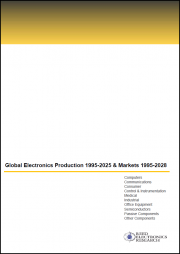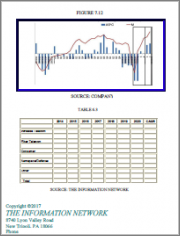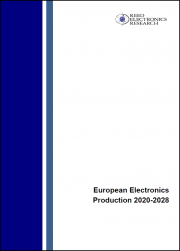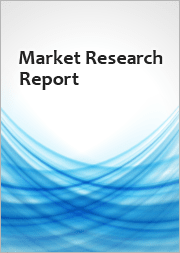
|
시장보고서
상품코드
1818041
세계의 그린 및 지속가능한 일렉트로닉스 시장 예측(-2032년) : 제품 유형별, 재료 유형별, 프로세스 유형별, 인증별, 서비스별, 최종사용자별, 지역별 분석Green and Sustainable Electronics Market Forecasts to 2032 - Global Analysis By Product Type, Material Type, Process Type, Certification, Service, End User and By Geography |
||||||
Stratistics MRC에 의하면, 세계의 그린 및 지속가능한 일렉트로닉스 시장은 2025년에 880억 2,000만 달러에 이르고, 예측 기간 중에 23.8%의 연평균 복합 성장률(CAGR)로 성장하여 2032년에는 3,923억 2,000만 달러에 달할 것으로 예측됩니다.
그린 및 지속가능한 일렉트로닉스은 원자재 조달부터 사용 후 폐기까지 전체 수명주기 동안 환경에 미치는 영향을 최소화하도록 설계된 기기 및 부품을 말합니다. 이러한 기술은 에너지 효율, 무독성 재료, 재활용성, 탄소 발자국 감소를 우선순위에 두고 있습니다. 친환경 제조 공정과 순환 경제의 원칙을 도입하여 전자 폐기물과 자원 고갈을 줄이는 것을 목표로 하고 있습니다. 일반적인 응용 분야로는 생분해성 기판, 저전력 회로, 수리 가능성을 지원하는 모듈식 설계 등이 있으며, 가전제품, 산업 시스템, 스마트 인프라의 세계 지속가능성 목표에 부합합니다.
International Journal of Advanced Research in Computer and Communication Engineering(IJARCCE)에 따르면, 전자기기의 전 세계적인 보급은 전례 없는 수준의 기술적 상호연결을 가져왔지만, 동시에 환경 악화에 크게 기여하고 있습니다. 동시에 환경 악화에도 크게 기여하고 있습니다.
기업의 지속가능성을 위한 노력 강화
각 산업 분야의 기업들이 지속가능성을 기본 전략으로 삼는 움직임이 가속화되고 있으며, 친환경 전자제품에 대한 수요가 증가하고 있습니다. 탄소중립 사업부터 친환경 조달 정책까지, 기업들은 ESG 목표를 달성하기 위해 저영향 기술을 우선시하고 있습니다. 또한, 정부의 인센티브와 투자자들의 압력으로 인해 지속 가능한 전자제품으로의 전환이 가속화되고 있으며, 미래 대응 가능한 인프라의 중요한 구성 요소로 자리매김하고 있습니다.
복잡한 재활용 및 전자 폐기물 관리
다재료 장치의 재활용 공정은 기술적으로 어렵고, 종종 분해와 위험 부품의 분리가 필요합니다. 전자폐기물 회수를 위한 인프라가 제한적이고, 전 세계적으로 일관된 규제가 없습니다는 점이 회수 작업을 더욱 복잡하게 만들고 있습니다. 또한, 기존 전자기기에는 희토류 금속과 유해물질이 포함되어 있어 환경에 대한 우려가 커지면서 대규모 재활용 노력이 방해받고 시장 도입이 지연되고 있습니다.
순환 경제 모델과 디자인 혁신
기업들은 폐기물을 최소화하고 자원 효율성을 극대화하기 위해 모듈식 아키텍처, 수리 가능한 시스템, 회수 프로그램에 투자하고 있습니다. 생분해성 회로 기판, 저에너지 프로세서, 재활용 가능한 케이스 등 디자인 혁신이 인기를 끌고 있습니다. 이러한 발전은 환경에 미치는 영향을 줄일 뿐만 아니라 재생 및 재판매를 통해 새로운 수익원을 창출할 수 있습니다. 하이테크 기업과 지속가능성 스타트업과의 전략적 협업은 폐쇄형 루프 제조로의 전환을 더욱 촉진하는 촉매제가 되고 있습니다.
탄소 가격 상승과 공급망 혼란
불안정한 탄소 가격과 배출 규제 강화로 인해 전자제품 제조업체, 특히 화석연료 기반 에너지 및 재생 불가능한 재료에 의존하는 제조업체의 운영 비용이 상승하고 있습니다. 동시에 세계 공급망은 지정학적 긴장, 원자재 부족, 운송 병목현상의 영향을 받기 쉽습니다. 이러한 혼란은 특히 그린 인프라가 부족한 지역에서 조달되는 부품의 생산 일정을 지연시키고 비용을 상승시킬 수 있습니다.
코로나19의 영향
전염병은 녹색 전자제품 시장에 이중으로 영향을 미쳤습니다. 공급망 중단과 공장 가동 중단으로 인해 지속 가능한 장비의 생산과 배치가 일시적으로 중단되었습니다. 다른 한편으로, 원격 근무와 디지털 혁신은 에너지 효율적인 컴퓨팅 솔루션에 대한 수요를 가속화했습니다. 또한, 이번 위기 동안 환경에 대한 인식이 높아지면서 지속 가능한 기술에 대한 관심이 다시금 높아졌고, 제조업체들은 팬데믹 이후 회복력을 높이기 위해 디자인 및 패키징 전략을 재검토하고 있습니다.
예측 기간 동안 그린 컴퓨터 및 노트북 부문이 가장 클 것으로 예측됩니다.
그린 컴퓨터 및 노트북 부문은 기업, 교육 기관 및 소비자 부문에서 널리 채택되고 있어 예측 기간 동안 가장 큰 시장 점유율을 차지할 것으로 예측됩니다. 이 장치에는 에너지 절약형 프로세서, 재활용 가능한 섀시 재료, 저배출 제조 기술이 내장되어 있습니다. 또한, 환경 인증을 받은 전자제품을 선호하는 정부 조달 정책과 지속 가능한 대체품에 대한 소비자 수요 증가도 이러한 인기를 뒷받침하고 있습니다.
예측 기간 동안 생분해성 폴리머 부문은 가장 높은 CAGR을 보일 것으로 예측됩니다.
예측 기간 동안 생분해성 폴리머 부문은 케이싱, 커넥터 및 포장 부품에 적용되어 가장 높은 성장률을 보일 것으로 예측됩니다. 이러한 재료는 유해한 잔류물을 남기지 않고 자연적으로 분해되어 기존 플라스틱에 대한 대안이 될 수 있습니다. 바이오 복합재와 열가소성 플라스틱의 혁신은 내구성과 기능성을 손상시키지 않고 주류 전자제품에 통합할 수 있게 해줍니다.
가장 큰 점유율을 차지하는 지역
예측 기간 동안 북미는 강력한 환경 규제, 높은 R&D 역량, 소비자의 높은 인식에 힘입어 가장 큰 시장 점유율을 차지할 것으로 예측됩니다. 이 지역에는 지속 가능한 제품 라인과 순환 경제에 투자하는 주요 기업들이 다수 존재합니다. 녹색 조달 및 전자 폐기물 재활용을 촉진하는 연방 및 주정부 차원의 프로그램은 시장 성장을 더욱 촉진하고 있습니다. 또한, 기술 대기업과 혁신 허브의 존재는 다양한 용도에 맞는 친환경 기술의 지속적인 개발을 보장합니다.
CAGR이 가장 높은 지역
예측 기간 동안 아시아태평양은 도시화 진행, 전자제품 소비 증가, 정부 지원 정책에 힘입어 가장 높은 CAGR을 보일 것으로 예측됩니다. 중국, 인도, 한국 등의 국가들은 녹색 제조와 재생에너지 통합에 많은 투자를 하고 있습니다. 현지 스타트업과 다국적 기업이 협력하여 신흥국 시장을 위한 저부하 장치를 개발하고 있습니다.
무료 커스터마이징 서비스
본 보고서를 구독하는 고객은 다음과 같은 무료 맞춤화 옵션 중 하나를 이용할 수 있습니다.
- 기업소개
- 추가 시장 기업의 종합적인 프로파일링(최대 3개사까지)
- 주요 기업의 SWOT 분석(3개사까지)
- 지역 세분화
- 고객의 관심에 따른 주요 국가별 시장 추정, 예측, CAGR(주: 타당성 확인에 따라 다름)
- 경쟁사 벤치마킹
- 제품 포트폴리오, 지리적 입지, 전략적 제휴를 기반으로 한 주요 기업 벤치마킹
목차
제1장 주요 요약
제2장 서문
- 개요
- 이해관계자
- 조사 범위
- 조사 방법
- 데이터 마이닝
- 데이터 분석
- 데이터 검증
- 조사 접근
- 조사 자료
- 1차 조사 자료
- 2차 조사 정보원
- 전제조건
제3장 시장 동향 분석
- 성장 촉진요인
- 성장 억제요인
- 기회
- 위협
- 제품 분석
- 최종사용자 분석
- 신흥 시장
- COVID-19의 영향
제4장 Porter의 Five Forces 분석
- 공급 기업의 교섭력
- 바이어의 교섭력
- 대체품의 위협
- 신규 진출업체의 위협
- 경쟁 기업간 경쟁 관계
제5장 세계의 그린 및 지속가능한 일렉트로닉스 시장 : 제품 유형별
- 그린 컴퓨터 및 노트북
- 그린 스마트폰 및 태블릿
- 그린 스마트홈 디바이스
- 그린 웨어러블
- 그린 산업용 일렉트로닉스
- 그린 가전
- 휴대용 일렉트로닉스
- 기타
제6장 세계의 그린 및 지속가능한 일렉트로닉스 시장 : 재료 유형별
- 재활용 플라스틱
- 생분해성 폴리머
- 무연 솔더
- 무할로겐 부품
- 에너지 효율 디스플레이
- 저전력 반도체
제7장 세계의 그린 및 지속가능한 일렉트로닉스 시장 : 프로세스 유형별
- 수명주기 평가(LCA)
- 환경을 고려한 설계(DfE)
- 폐기물 제로 제조
- 탄소 중립 물류
- 순환형 경제 통합
제8장 세계의 그린 및 지속가능한 일렉트로닉스 시장 : 인증별
- 에너지 스타
- EPEAT 골드/실버/브론즈
- TCO 인정
- 그린 씰
- ISO 14001
제9장 세계의 그린 및 지속가능한 일렉트로닉스 시장 : 서비스별
- 전자기기 수탁제조 서비스(EMS)
- 엔지니어링 서비스
- 검사 및 개발 실장
- 물류 서비스
- 폐기물 관리 및 재활용 서비스
- 기타
제10장 세계의 그린 및 지속가능한 일렉트로닉스 시장 : 최종사용자별
- 가전
- 자동차용 전자기기
- 헬스케어 기기
- 산업 자동화
- 항공우주 및 방위
- IT 및 통신
- 기타
제11장 세계의 그린 및 지속가능한 일렉트로닉스 시장 : 지역별
- 북미
- 미국
- 캐나다
- 멕시코
- 유럽
- 독일
- 영국
- 이탈리아
- 프랑스
- 스페인
- 기타 유럽
- 아시아태평양
- 일본
- 중국
- 인도
- 호주
- 뉴질랜드
- 한국
- 기타 아시아태평양
- 남미
- 아르헨티나
- 브라질
- 칠레
- 기타 남미
- 중동 및 아프리카
- 사우디아라비아
- 아랍에미리트(UAE)
- 카타르
- 남아프리카공화국
- 기타 중동 및 아프리카
제12장 주요 발전
- 계약, 파트너십, 협업 및 합작투자(JV)
- 인수와 합병
- 신제품 발매
- 사업 확대
- 기타 주요 전략
제13장 기업 프로파일링
- Apple Inc.
- Dell Technologies Inc.
- Samsung Electronics Co., Ltd.
- HP Inc.
- Sony Corporation
- LG Electronics Inc.
- Intel Corporation
- Nokia
- Panasonic Corporation
- Siemens AG
- First Solar Inc.
- STMicroelectronics N.V.
- Sharp Corporation
- Acer Inc.
- Schneider Electric SE
- Infineon Technologies AG
- Vestas Wind Systems A/S
- TSMC(Taiwan Semiconductor Manufacturing Company)
- Wipro Limited
- Enphase Energy Inc
According to Stratistics MRC, the Global Green and Sustainable Electronics Market is accounted for $88.02 billion in 2025 and is expected to reach $392.32 billion by 2032 growing at a CAGR of 23.8% during the forecast period. Green and sustainable electronics are devices and components designed with minimal environmental impact across their lifecycle from raw material sourcing to end-of-life disposal. These technologies prioritize energy efficiency, non-toxic materials, recyclability, and reduced carbon footprint. Incorporating eco-friendly manufacturing processes and circular economy principles, they aim to mitigate electronic waste and resource depletion. Common applications include biodegradable substrates, low-power circuits, and modular designs that support repairability, aligning with global sustainability goals in consumer electronics, industrial systems, and smart infrastructure.
According to the International Journal of Advanced Research in Computer and Communication Engineering (IJARCCE), the global proliferation of electronic devices has led to unprecedented levels of technological interconnection, yet it also contributes significantly to environmental degradation.
Market Dynamics:
Driver:
Growing corporate sustainability initiatives
Corporations across industries are increasingly embedding sustainability into their core strategies, driving demand for eco-friendly electronics. From carbon-neutral operations to green procurement policies, businesses are prioritizing low-impact technologies to meet ESG goals. Moreover, government incentives and investor pressure are accelerating the transition toward sustainable electronics, positioning them as a critical component of future-ready infrastructure.
Restraint:
Complex recycling and e-waste management
Recycling processes for multi-material devices are technically challenging, often requiring disassembly and separation of hazardous components. Limited infrastructure for e-waste collection and inconsistent global regulations further complicate recovery efforts. Additionally, presence of rare earth metals and toxic substances in conventional electronics raises environmental concerns, deterring large-scale recycling initiatives and slowing market adoption.
Opportunity:
Innovation in circular economy models and design
Companies are investing in modular architectures, repairable systems, and take-back programs to minimize waste and maximize resource efficiency. Design innovations such as biodegradable circuit boards, low-energy processors, and recyclable enclosures are gaining traction. These advancements not only reduce environmental impact but also open new revenue streams through refurbishment and resale. Strategic collaborations between tech firms and sustainability startups are further catalyzing the shift toward closed-loop manufacturing.
Threat:
Rising carbon prices & supply chain disruptions
Volatile carbon pricing and tightening emissions regulations are increasing operational costs for electronics manufacturers, especially those reliant on fossil-fuel-based energy or non-renewable materials. Simultaneously, global supply chains remain vulnerable to geopolitical tensions, raw material shortages, and transportation bottlenecks. These disruptions can delay production timelines and inflate costs, particularly for components sourced from regions with limited green infrastructure.
Covid-19 Impact:
The pandemic had a dual effect on the green electronics market. On one hand, supply chain interruptions and factory shutdowns temporarily stalled production and deployment of sustainable devices. On the other, remote work and digital transformation accelerated demand for energy-efficient computing solutions. Additionally, heightened environmental awareness during the crisis prompted renewed interest in sustainable technologies, encouraging manufacturers to rethink design and packaging strategies for post-pandemic resilience.
The green computers & laptops segment is expected to be the largest during the forecast period
The green computers & laptops segment is expected to account for the largest market share during the forecast period due to their widespread adoption across corporate, educational, and consumer sectors. These devices incorporate energy-saving processors, recyclable chassis materials, and low-emission manufacturing techniques. Their popularity is further boosted by government procurement policies favoring eco-certified electronics and growing consumer demand for sustainable alternatives.
The biodegradable polymers segment is expected to have the highest CAGR during the forecast period
Over the forecast period, the biodegradable polymers segment is predicted to witness the highest growth rate driven by their application in casings, connectors, and packaging components. These materials offer a viable alternative to conventional plastics, decomposing naturally without leaving harmful residues. Innovations in bio-based composites and thermoplastics are enabling their integration into mainstream electronics without compromising durability or functionality.
Region with largest share:
During the forecast period, the North America region is expected to hold the largest market share propelled by robust environmental regulations, advanced R&D capabilities, and strong consumer awareness. The region hosts several key players investing in sustainable product lines and circular economy initiatives. Federal and state-level programs promoting green procurement and e-waste recycling are further reinforcing market growth. Additionally, the presence of tech giants and innovation hubs ensures continuous development of eco-friendly technologies tailored for diverse applications.
Region with highest CAGR:
Over the forecast period, the Asia Pacific region is anticipated to exhibit the highest CAGR fueled by rising urbanization, increasing electronic consumption, and supportive government policies. Countries like China, India, and South Korea are investing heavily in green manufacturing and renewable energy integration. Local startups and multinational corporations are collaborating to develop low-impact devices tailored for emerging markets.
Key players in the market
Some of the key players in Green and Sustainable Electronics Market include Apple Inc., Dell Technologies Inc., Samsung Electronics Co., Ltd., HP Inc., Sony Corporation, LG Electronics Inc., Intel Corporation, Nokia, Panasonic Corporation, Siemens AG, First Solar Inc., STMicroelectronics N.V., Sharp Corporation, Acer Inc., Schneider Electric SE, Infineon Technologies AG, Vestas Wind Systems A/S, TSMC (Taiwan Semiconductor Manufacturing Company), Wipro Limited and Enphase Energy Inc.
Key Developments:
In September 2025, Samsung unveiled its Vision AI Companion / Future Living vision at IFA 2025 announcing AI-powered displays and expanded Galaxy AI experiences across devices. The announcement highlights Samsung's push to embed generative/multimodal AI across TVs, appliances and mobile devices to expand device ecosystem capabilities.
In June 2025, Apple announced expanded Apple Intelligence features and new developer tools at WWDC including on-device foundation model access and new design material "Liquid Glass" for system UI. The release frames these updates as platform-level changes to enable private on-device AI and richer app UX across iPhone, iPad, Mac and Vision Pro.
In June 2025, Dell and Lowe's announced a partnership to transform retail experiences with Dell AI infrastructure deploying AI-powered infrastructure to modernize store operations and customer service. Dell positioned its AI platform and edge/PC solutions as key enablers for personalized retail experiences and smarter operations.
Product Types Covered:
- Green Computers & Laptops
- Green Smartphones & Tablets
- Green Smart Home Devices
- Green Wearables
- Green Industrial Electronics
- Green Consumer Appliances
- Portable Electronics
- Other Product Types
Material Types Covered:
- Recycled Plastics
- Biodegradable Polymers
- Lead-Free Solder
- Halogen-Free Components
- Energy-Efficient Displays
- Low-Power Semiconductors
Process Types Covered:
- Life Cycle Assessment (LCA)
- Design for Environment (DfE)
- Zero-Waste Manufacturing
- Carbon-Neutral Logistics
- Circular Economy Integration
Material & Components Covered:
- Plastics & Polymers
- Metal Contacts
- PCB & Electronics
- Other Material & Components
Certifications Covered:
- Energy Star
- EPEAT Gold/Silver/Bronze
- TCO Certified
- Green Seal
- ISO 14001
Services Covered:
- Electronics Manufacturing Services (EMS)
- Engineering Services
- Test & Development Implementation
- Logistics Services
- Waste Management and Recycling Services
- Other Services
End Users Covered:
- Consumer Electronics
- Automotive Electronics
- Healthcare Devices
- Industrial Automation
- Aerospace & Defense
- IT & Telecom
- Other End Users
Regions Covered:
- North America
- US
- Canada
- Mexico
- Europe
- Germany
- UK
- Italy
- France
- Spain
- Rest of Europe
- Asia Pacific
- Japan
- China
- India
- Australia
- New Zealand
- South Korea
- Rest of Asia Pacific
- South America
- Argentina
- Brazil
- Chile
- Rest of South America
- Middle East & Africa
- Saudi Arabia
- UAE
- Qatar
- South Africa
- Rest of Middle East & Africa
What our report offers:
- Market share assessments for the regional and country-level segments
- Strategic recommendations for the new entrants
- Covers Market data for the years 2024, 2025, 2026, 2028, and 2032
- Market Trends (Drivers, Constraints, Opportunities, Threats, Challenges, Investment Opportunities, and recommendations)
- Strategic recommendations in key business segments based on the market estimations
- Competitive landscaping mapping the key common trends
- Company profiling with detailed strategies, financials, and recent developments
- Supply chain trends mapping the latest technological advancements
Free Customization Offerings:
All the customers of this report will be entitled to receive one of the following free customization options:
- Company Profiling
- Comprehensive profiling of additional market players (up to 3)
- SWOT Analysis of key players (up to 3)
- Regional Segmentation
- Market estimations, Forecasts and CAGR of any prominent country as per the client's interest (Note: Depends on feasibility check)
- Competitive Benchmarking
- Benchmarking of key players based on product portfolio, geographical presence, and strategic alliances
Table of Contents
1 Executive Summary
2 Preface
- 2.1 Abstract
- 2.2 Stake Holders
- 2.3 Research Scope
- 2.4 Research Methodology
- 2.4.1 Data Mining
- 2.4.2 Data Analysis
- 2.4.3 Data Validation
- 2.4.4 Research Approach
- 2.5 Research Sources
- 2.5.1 Primary Research Sources
- 2.5.2 Secondary Research Sources
- 2.5.3 Assumptions
3 Market Trend Analysis
- 3.1 Introduction
- 3.2 Drivers
- 3.3 Restraints
- 3.4 Opportunities
- 3.5 Threats
- 3.6 Product Analysis
- 3.7 End User Analysis
- 3.8 Emerging Markets
- 3.9 Impact of Covid-19
4 Porters Five Force Analysis
- 4.1 Bargaining power of suppliers
- 4.2 Bargaining power of buyers
- 4.3 Threat of substitutes
- 4.4 Threat of new entrants
- 4.5 Competitive rivalry
5 Global Green and Sustainable Electronics Market, By Product Type
- 5.1 Introduction
- 5.2 Green Computers & Laptops
- 5.3 Green Smartphones & Tablets
- 5.4 Green Smart Home Devices
- 5.5 Green Wearables
- 5.6 Green Industrial Electronics
- 5.7 Green Consumer Appliances
- 5.8 Portable Electronics
- 5.9 Other Product Types
6 Global Green and Sustainable Electronics Market, By Material Type
- 6.1 Introduction
- 6.2 Recycled Plastics
- 6.3 Biodegradable Polymers
- 6.4 Lead-Free Solder
- 6.5 Halogen-Free Components
- 6.6 Energy-Efficient Displays
- 6.7 Low-Power Semiconductors
7 Global Green and Sustainable Electronics Market, By Process Type
- 7.1 Introduction
- 7.2 Life Cycle Assessment (LCA)
- 7.3 Design for Environment (DfE)
- 7.4 Zero-Waste Manufacturing
- 7.5 Carbon-Neutral Logistics
- 7.6 Circular Economy Integration
8 Global Green and Sustainable Electronics Market, By Certification
- 8.1 Introduction
- 8.2 Energy Star
- 8.3 EPEAT Gold/Silver/Bronze
- 8.4 TCO Certified
- 8.5 Green Seal
- 8.6 ISO 14001
9 Global Green and Sustainable Electronics Market, By Service
- 9.1 Introduction
- 9.2 Electronics Manufacturing Services (EMS)
- 9.3 Engineering Services
- 9.4 Test & Development Implementation
- 9.5 Logistics Services
- 9.6 Waste Management and Recycling Services
- 9.7 Other Services
10 Global Green and Sustainable Electronics Market, By End User
- 10.1 Introduction
- 10.2 Consumer Electronics
- 10.3 Automotive Electronics
- 10.4 Healthcare Devices
- 10.5 Industrial Automation
- 10.6 Aerospace & Defense
- 10.7 IT & Telecom
- 10.8 Other End Users
11 Global Green and Sustainable Electronics Market, By Geography
- 11.1 Introduction
- 11.2 North America
- 11.2.1 US
- 11.2.2 Canada
- 11.2.3 Mexico
- 11.3 Europe
- 11.3.1 Germany
- 11.3.2 UK
- 11.3.3 Italy
- 11.3.4 France
- 11.3.5 Spain
- 11.3.6 Rest of Europe
- 11.4 Asia Pacific
- 11.4.1 Japan
- 11.4.2 China
- 11.4.3 India
- 11.4.4 Australia
- 11.4.5 New Zealand
- 11.4.6 South Korea
- 11.4.7 Rest of Asia Pacific
- 11.5 South America
- 11.5.1 Argentina
- 11.5.2 Brazil
- 11.5.3 Chile
- 11.5.4 Rest of South America
- 11.6 Middle East & Africa
- 11.6.1 Saudi Arabia
- 11.6.2 UAE
- 11.6.3 Qatar
- 11.6.4 South Africa
- 11.6.5 Rest of Middle East & Africa
12 Key Developments
- 12.1 Agreements, Partnerships, Collaborations and Joint Ventures
- 12.2 Acquisitions & Mergers
- 12.3 New Product Launch
- 12.4 Expansions
- 12.5 Other Key Strategies
13 Company Profiling
- 13.1 Apple Inc.
- 13.2 Dell Technologies Inc.
- 13.3 Samsung Electronics Co., Ltd.
- 13.4 HP Inc.
- 13.5 Sony Corporation
- 13.6 LG Electronics Inc.
- 13.7 Intel Corporation
- 13.8 Nokia
- 13.9 Panasonic Corporation
- 13.10 Siemens AG
- 13.11 First Solar Inc.
- 13.12 STMicroelectronics N.V.
- 13.13 Sharp Corporation
- 13.14 Acer Inc.
- 13.15 Schneider Electric SE
- 13.16 Infineon Technologies AG
- 13.17 Vestas Wind Systems A/S
- 13.18 TSMC (Taiwan Semiconductor Manufacturing Company)
- 13.19 Wipro Limited
- 13.20 Enphase Energy Inc



















